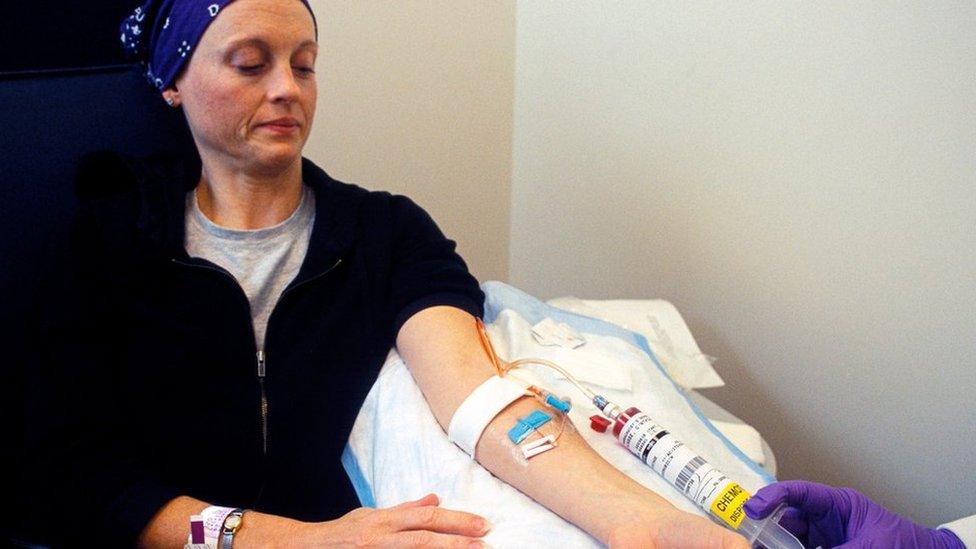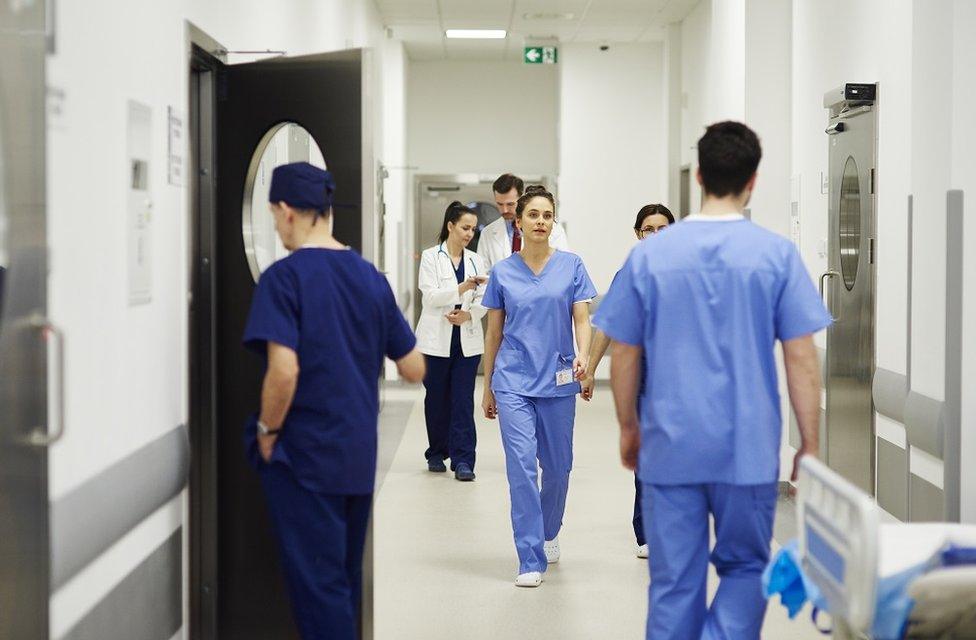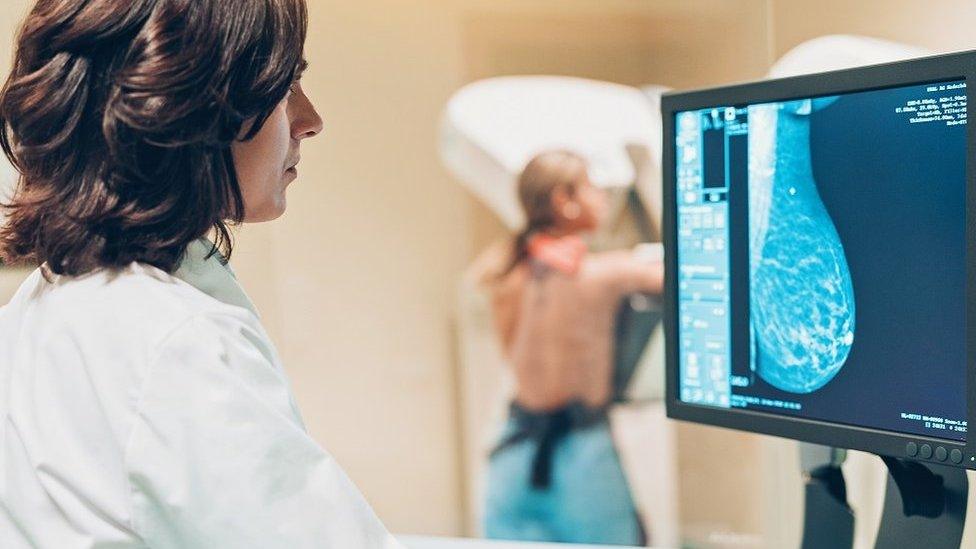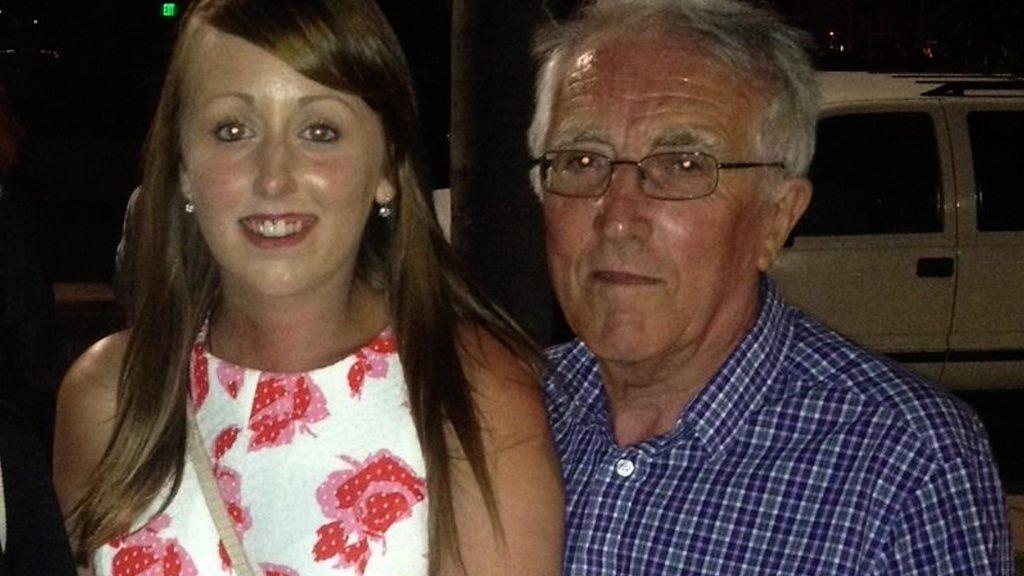Over a third of cancer cases in Scotland diagnosed in A&E
- Published

Over a third of cancers in Scotland are found when people arrive as hospital emergencies, researchers say.
A study found 39% of cancers were spotted in departments such as A&E, a similar proportion to other UK nations.
Experts are warning that emergency referrals could rise after the pandemic reduced access to cancer tests and fewer people came forward.
The Scottish government said it was working tirelessly with health boards to provide vital services.
The study by the International Cancer Benchmarking Partnership (ICBP), in partnership with Cancer Research UK, found Scotland had a high rate of cancer diagnosis through emergency referrals compared to some other high-income countries.
The study looked at more than 850,000 cases of cancer, diagnosed between 2012 and 2017, in Australia, Canada, Denmark, New Zealand, Norway and the UK.
Compared to Scotland's 39%, it found 37% of patients in England and Wales were diagnosed after being rushed to hospital and emergency diagnoses increased the risk of dying within 12 months.
In Northern Ireland, which was measured using a different definition, emergency referrals made up 27.9% of diagnoses.
Emergency referrals ranged from 42.5% in New Zealand to 24% in Australia.
Countries with higher levels of emergency referrals were found to have lower survival rates.
Researchers have suggested a need for better symptom awareness, reduced barriers to cancer screening, and additional diagnostic capacity to improve the early diagnosis of cancer.
Not enough staff or kit
Andy Glyde, of Cancer Research UK, said the figures were worrying.
He said Scotland was performing poorly compared to some other countries, and that the NHS was creaking under the weight of the pandemic, staff shortages and an overall lack of investment.
"So many people end up in A&E because we don't have enough staff and kit to test and diagnose cancer through usual routes," he added.
Older patients and those with advanced cancer were most likely to be diagnosed through emergency routes, as well as cancers with vague symptoms, like pancreatic, liver, lung, and ovarian cancer.

Cancer Research UK said the NHS is understaffed
A spokesman for the Scottish government said the NHS remained under sustained pressure as a result of the pandemic, with the number of people awaiting diagnostic tests now at the highest level since 2018.
But he insisted the government was working tirelessly with health boards to provide vital services.
He said: "Early cancer diagnosis has never been more important which is why we've committed a further £20m to our 'detect cancer early' programme over the parliamentary term, which aims to provide greater public awareness of signs and symptoms of cancer to improve earlier diagnosis rates.
"Patients continue to be seen based on their clinical urgency, for example those referred with an urgent suspicion of cancer continue to be prioritised for key diagnostic tests."
He added that significant funding was also being targeted at increasing diagnostic capacity across NHS Scotland.
The government had to balance competing demands which was why it published an NHS Recovery Plan setting out plans for the next five years, backed by more than £1bn of funding, he said.
- Published5 April 2022

- Published6 April 2022
